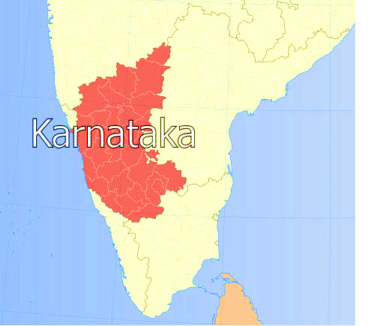
(Bildquelle: PlaneMad/Wikipedia. -- CC-by-sa)

(Bildquelle: PlaneMad/Wikipedia. -- CC-by-sa)
Zitierweise / cite as:
Hodson, Thomas: An elementary grammar of the Kannada, or Canarese language. -- 37. Syntax of Postpositions (§§ 319 - 320). -- Fassung vom 2011-08-27. -- URL: http://www.payer.de/hodson/hodson37.htm
First published as: Hodson, Thomas: An elementary grammar of the Kannada, or Canarese language ; in which every word used in the examples is translated, and the pronunciation is given in English characters. -- 2. ed. -- Bangalore : Wesleyan Mission Press, 1864. -- 128 p. ; 23 cm.
First time published here: 2011-08-27
Revisions:
©opyright: Public domain
This text is part of the section Sanskrit und Indien of Tüpfli's Global Village Library
If you don't get the diacritics displayed, install a Unicode font like Tahoma.
319. The postpositions generally correspond in meaning with English propositions. Most of them are affixed to the genitive case; some to the dative; and a few may be affixed to nearly all the cases.
320. The following, from the list (§§ 140, 144), may be added to relative participles, as well as to nouns and pronouns; viz.
| ಕೂಡ kūḍa ತರುವಾಯ taruvāya ಬಳಿಕ baḷika |
after |
| ತನಕ tanaka ಪರ್ಯಂತರ paryaṃtara ಮಟ್ಟಿಗೆ maṭṭige ವರಿಗೆ varige |
until |
| ಬಗ್ಯೆ bagye ನಿಮಿತ್ತ nimitta |
for, on account of |
| ಮೇಲೆ mēle | upon |
| ಮುಂಚೆ muṃce | previous to |
| ಹೊರ್ತು hortu | except |
as,
To 38. Syntax of Conjunctions (§§ 321 - 335)